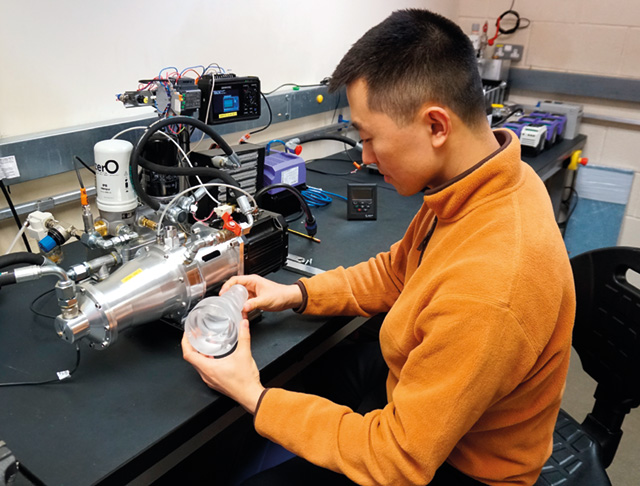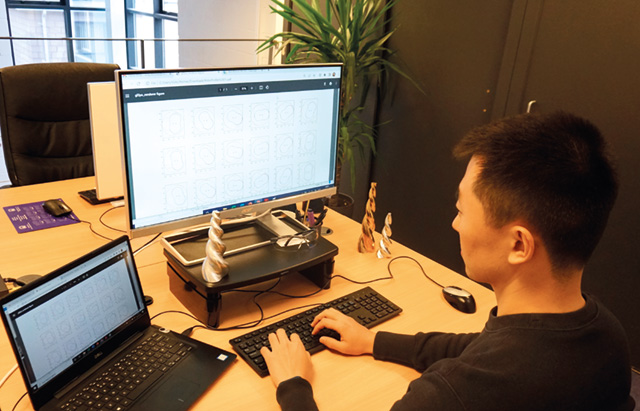
Nicol Low, COO at Vert Technologies, explores the role rotor modelling software plays in innovating new compressor technologies for the heat pump and refrigeration sectors’ transition to low global warming potential (GWP) media.
The compressor is an integral but often overlooked component in many systems and products, despite accounting for 20% of electrical power consumption in industrialised countries. However, with sustainability now a necessity in refrigerant-using fields – including the heat pump and refrigeration sectors – low-GWP mediums are being adopted.
However, these media require high absolute pressure requirements and high-pressure ratios for effective compression. Subsequently, organisations reliant on traditional compressor technologies could have to daisy-chain units to meet low-GWP refrigerant criteria, at significant OPEX and CAPEX cost.
Consequently, compressor innovation could now be an effective way to reach net zero. But with pandemic-squeezed CAPEX budgets, an engineering challenge arises – how can companies cost-effectively explore innovative new compressor solutions? And more importantly, how can they do so knowing they will perform like existing, traditional models?
Surety in the design process
One barrier to innovation is the need to provide significant outlays to develop hardware prototypes. Furthermore, vital performance metrics like volumetric efficiency, torque and flowrates are harder to gauge for new compressor models that effectively use low-GWP refrigerants. This is due to insufficient historical experimental data for these new designs, which must be overcome to accurately model compressors in applications exceeding the limits of traditional technologies.
Effectiveness and efficiency therefore cannot be gauged until compressor manufacturers have already made models – an expensive and time-consuming process. Furthermore, if results are unsatisfactory, project costs are unrecoverable.
In sectors financially constrained by the pandemic, this potential for wasted expense may be unjustifiable, with traditional compressor technologies preferred. Faced with this, organisations may be in a worsening situation, reliant on less efficient legacy compressor technologies unable to meet future-facing performance criteria.

measurements for manufactured prototypes are unnecessary
A middle step
Yet industry will move on from building tangible prototypes, as it is a vital part of compressor design processes. But component manufacturers do need a ‘middle’ step beforehand to reduce uncertainty and identify key performance metrics and maintenance requirements. Innovative rotor modelling software may therefore offer a solution.
Both virtual and physical prototype compressor designs are informed by historical data and experience plus customer specifications around flow rates, outlet pressure and shaft power. However, a crucial difference to be included in effective rotor modelling software is the ability to input process parameters alongside required geometric requirements.
As such, instead of solely using the latter to inform inner and outer 3D models and CAD measurements, process and geometry parameters can inform each other and provide coordinates for compressor surfaces ahead of production. This also enables manufacturers to go beyond simply producing rotor geometry and provide rough performance predictions using historical data based mainly on air. Instead, bolstering design processes with such software allows design engineers to make informed choices ahead of manufacturing and testing hardware, with greater knowledge of performance variables including different speeds, outlet pressures, refrigerant and coolant flow rate.
Quicker analysis
Importantly, these methods can more quickly create multiple models, as manual measurements for manufactured prototypes are unnecessary. At Vert, this has allowed swift analysis of multiple compressor sizes to gauge thermodynamic performance ahead of production.
For example, analysing multiple prototypes and checking their viability will be vital for HVAC applications, especially following the Government’s pledge to install 600,000 heat pumps by 2028. Considering only 35,000 installations occurred in 2019, design engineers may be unable to wait days testing the effectiveness of single designs if they are to keep ahead of ambitious rollout targets. Additionally, being unable to model performance may hamper maintenance programmes once more installations are operational, further reducing their effectiveness.
In conclusion, a paradigm shift is occurring around the compressor’s role, inspired by transitions to low-GWP refrigerants. Yet for original equipment manufacturers to keep up with fast-moving sustainability legislation and their attendant pressures, a similarly swift approach is required to prototype new compressor models.
By engaging with innovative companies offering these services, organisations in these industries can stay ahead of the curve.
www.vertrotors.com/vert-technologies | sales@vertrotors.com | t: +44 (0)131 664 3600

